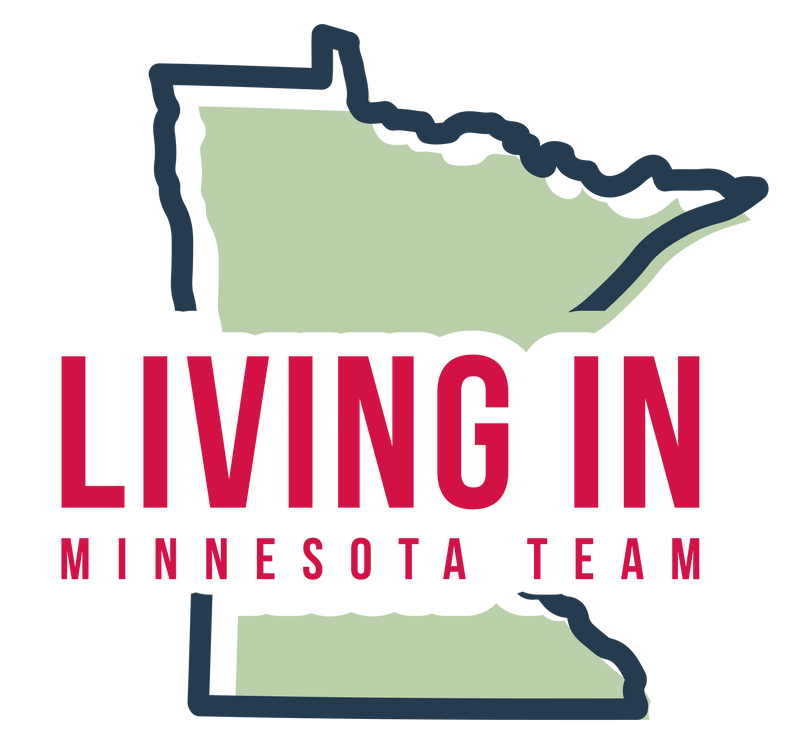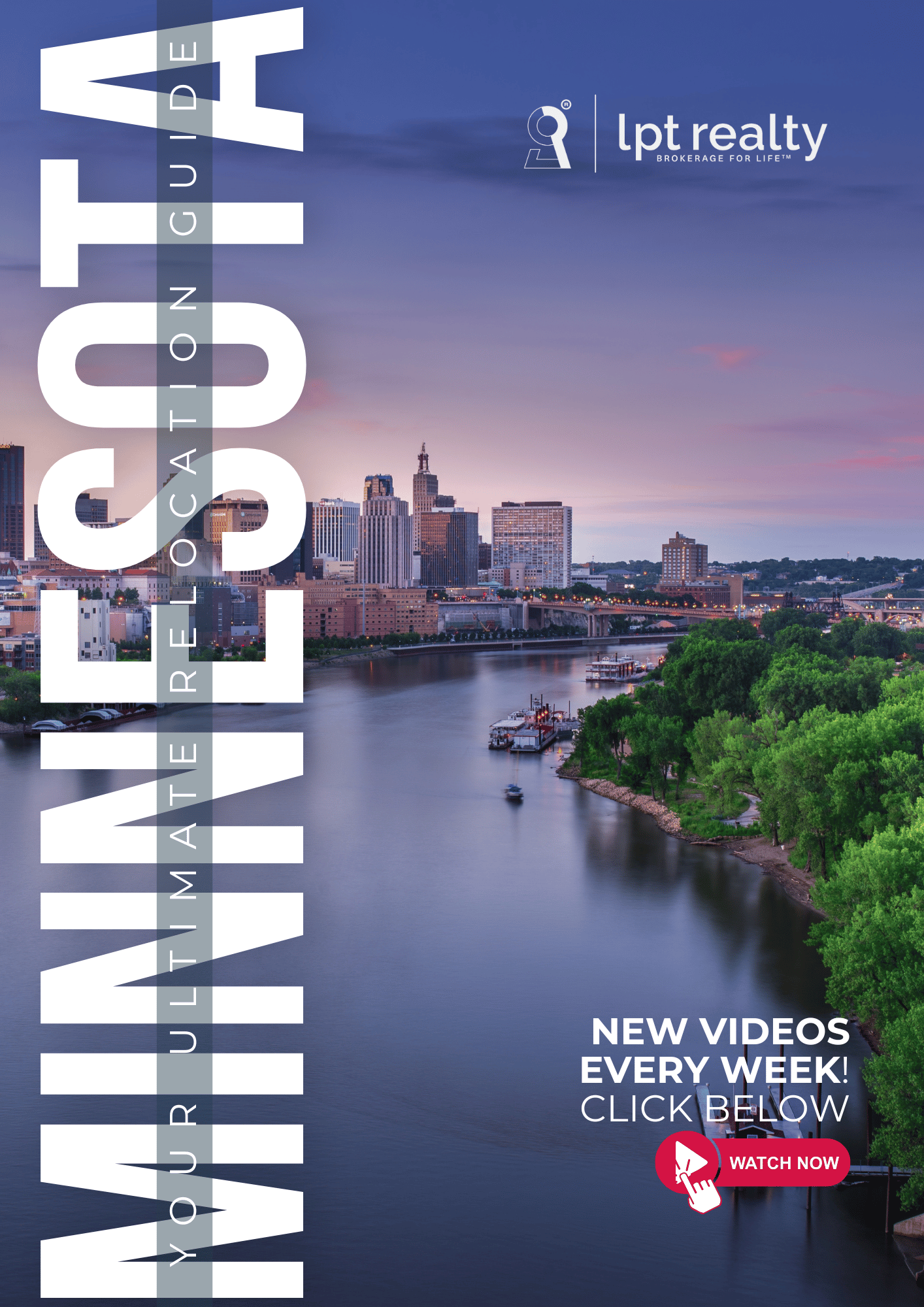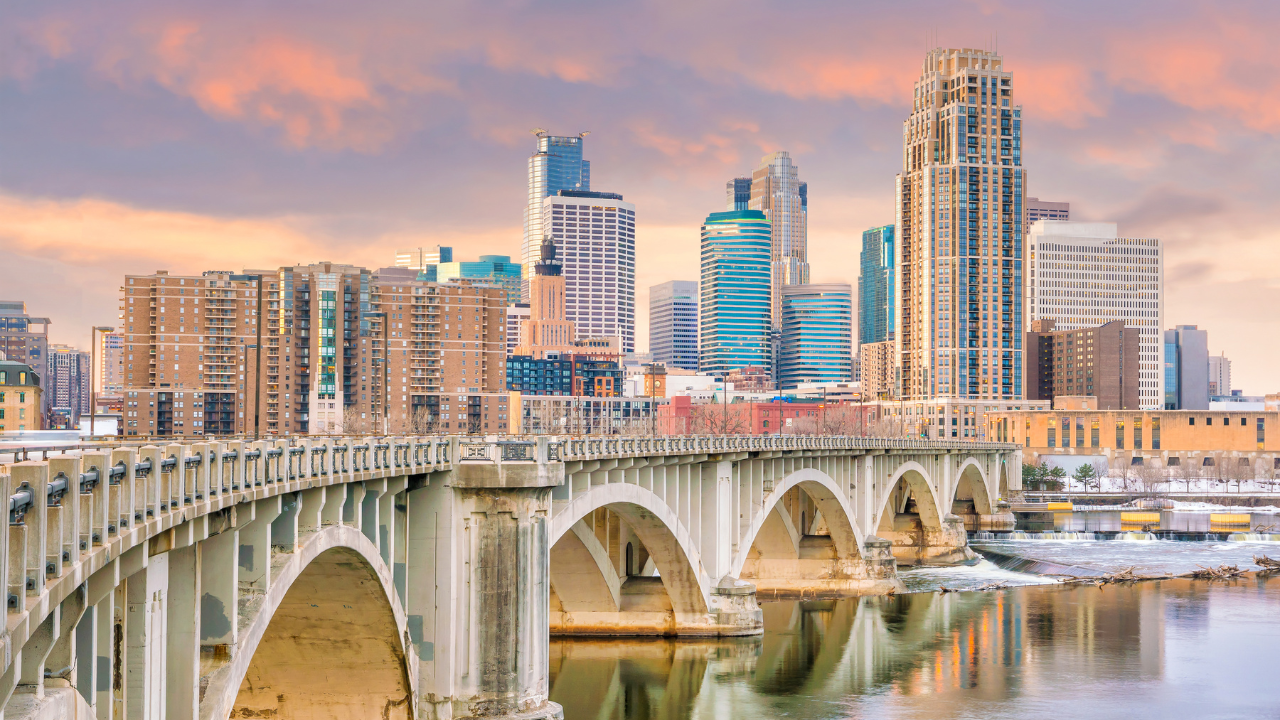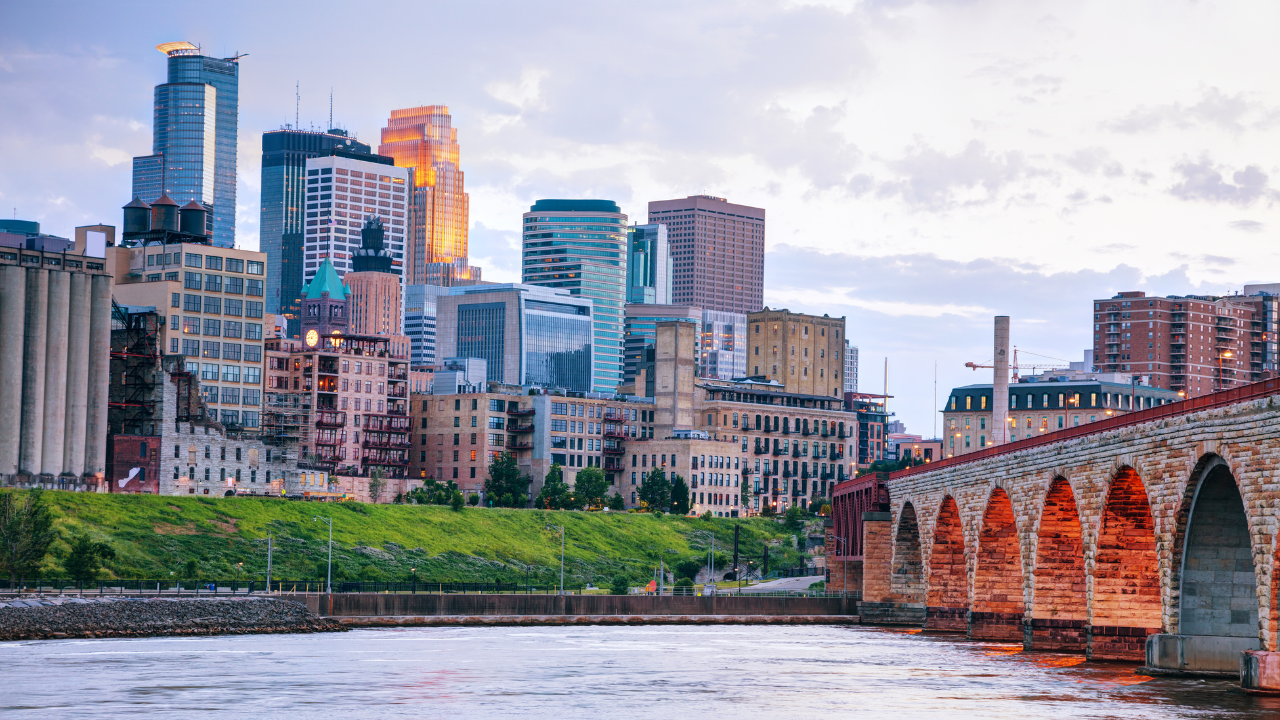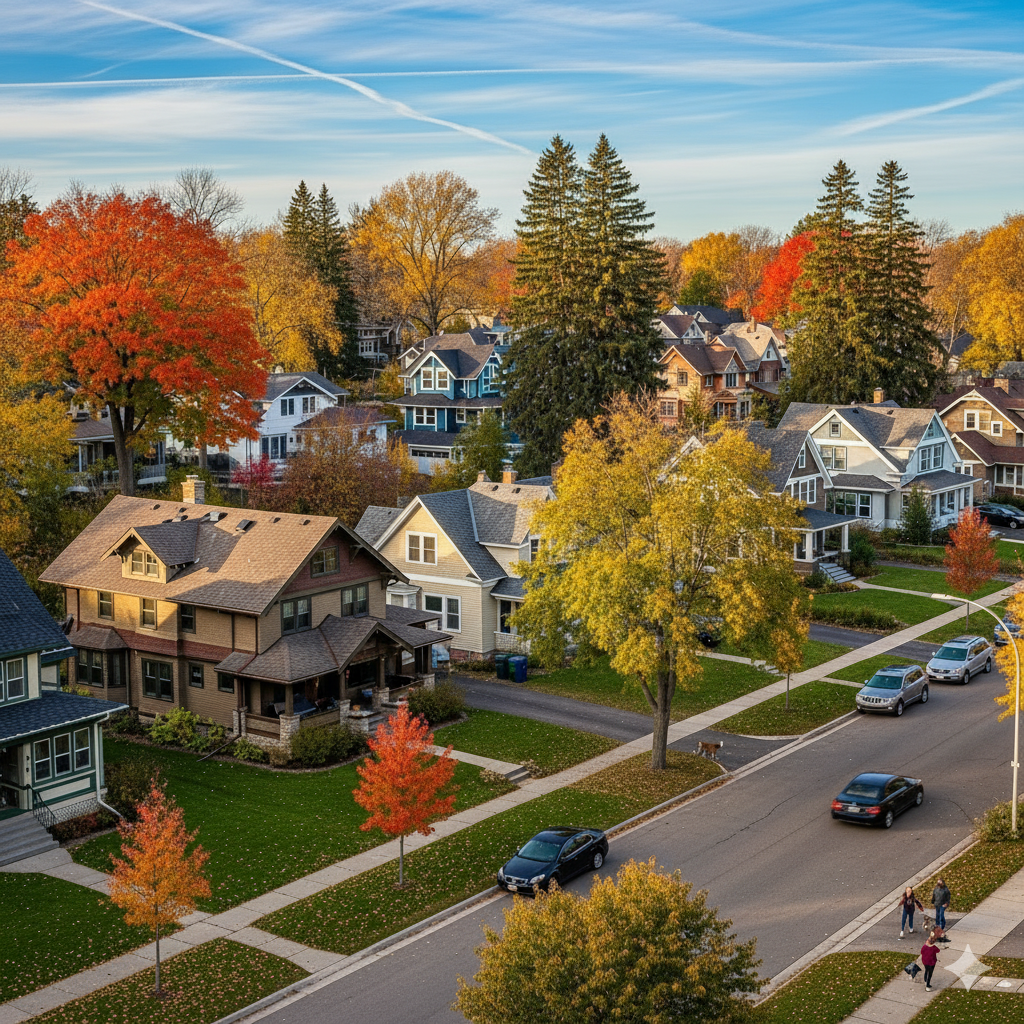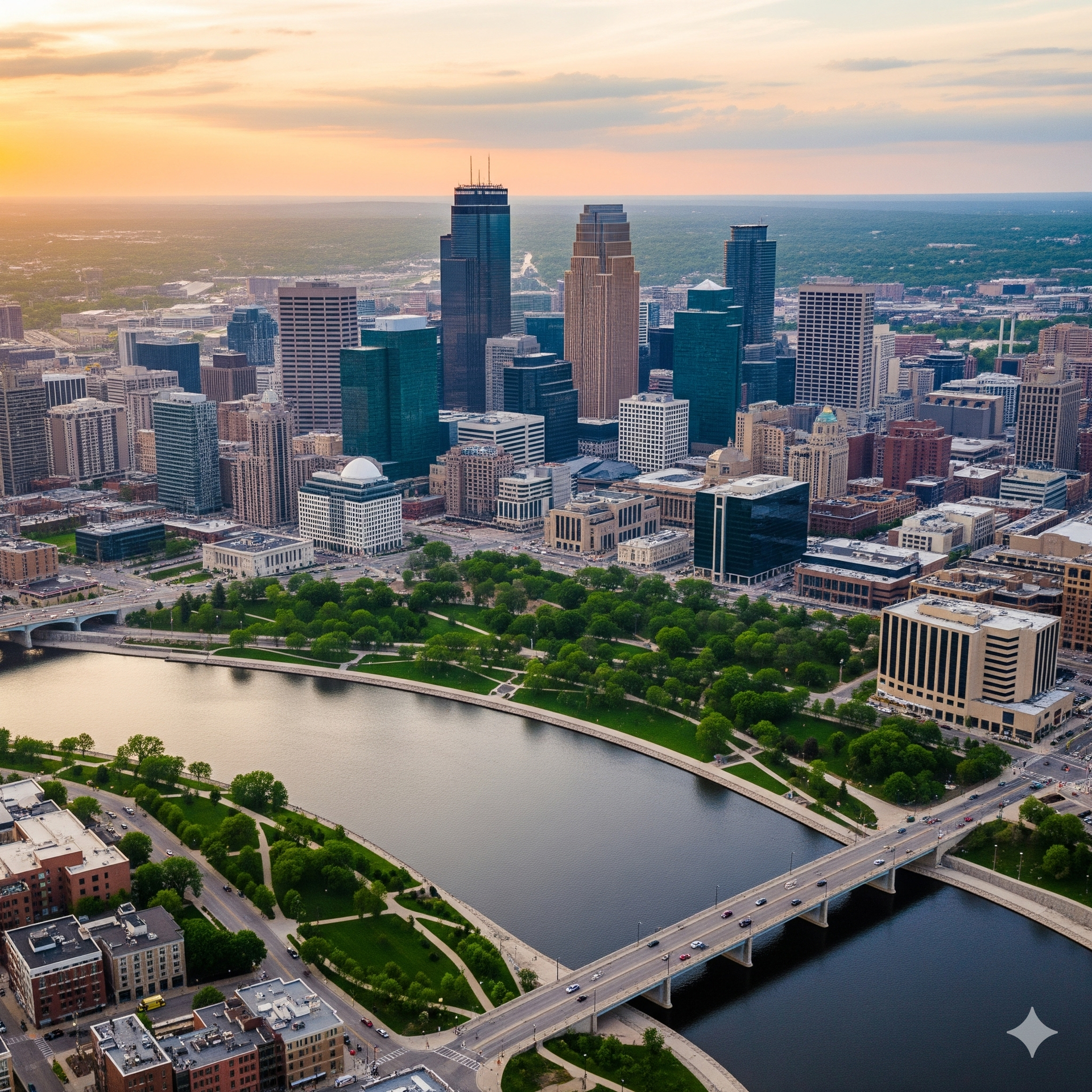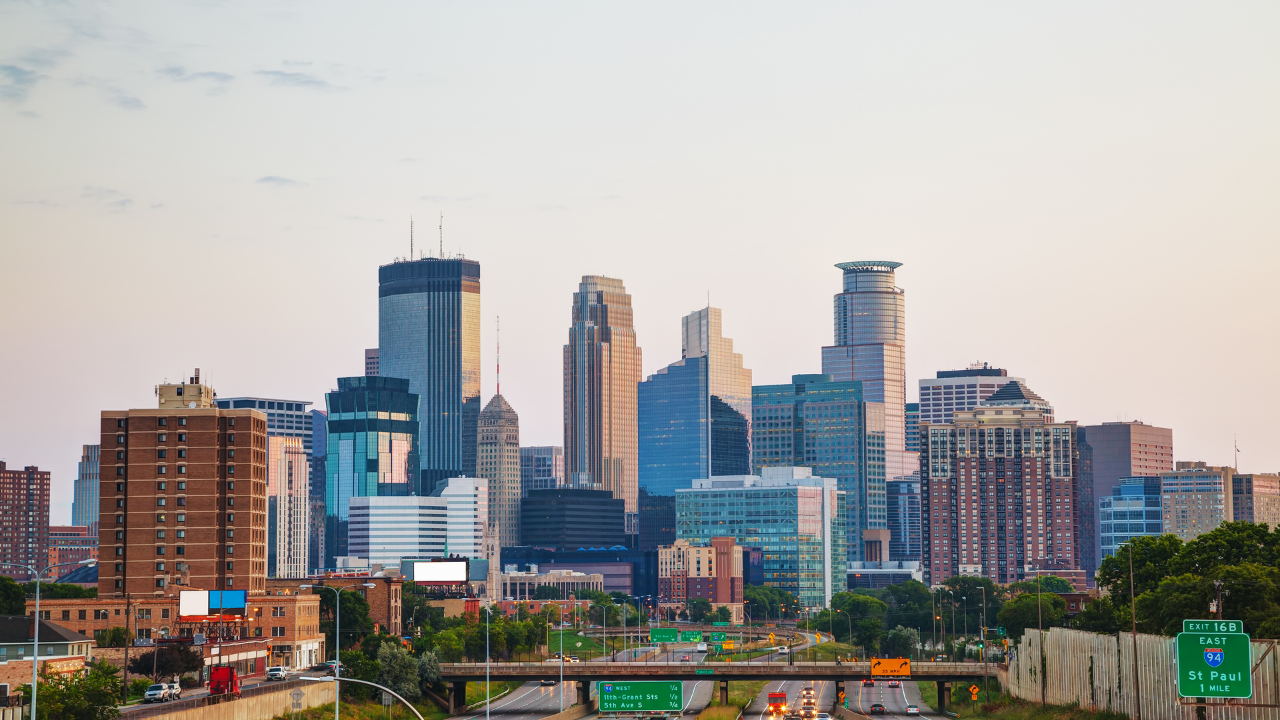Living in Minnesota: What It's Really Like
Table of Contents
- Intro: What Living in Minnesota Is Really Like
- The Winter Myth — How Cold Does It Actually Get?
- Seasons in Minnesota
- Minnesota Food Culture
- Minnesota Nice
- Minnesota Real Estate — Is It Affordable to Live Here?
- Diversity and Culture in Minnesota — Beyond Scandinavian Roots
- Moving to Minnesota — Practical Tips for Newcomers
- Final Thoughts on Living in Minnesota
- Living in Minnesota FAQ
- Want to Learn More About Life in Minnesota?
Intro: What Living in Minnesota Is Really Like
If you’re curious about living in Minnesota, whether you’re considering a move, visiting for the first time, or just trying to separate myth from reality, this article will take you through the top stereotypes, the real day-to-day, and practical tips to help you thrive here.
I get the questions all the time: Is winter a nonstop frozen wasteland? Do people really only eat lutefisk and tater tots? Are Minnesotans only polite and passive-aggressive rather than actually friendly? Is the housing market bargain-basement cheap? After talking to many newcomers and helping families relocate, I’ve learned what’s exaggerated, what’s partly true, and what’s absolutely wonderful about living in Minnesota.
The Winter Myth — How Cold Does It Actually Get?
When people picture living in Minnesota, the image often includes endless gray skies, sub-zero temperatures, constant shoveling, and everyone permanently bundled in parkas. The truth is a little more nuanced. Yes, winter here is very real. Yes, it can be cold, snowy, and sometimes bone-chilling. But the idea that Minnesotans hide indoors the entire season and hate every second of it is mostly a story told by drama queens and people who’ve never learned to layer properly.
If you’re serious about living in Minnesota, you have to accept one basic fact: winters are a season. They can be long, especially in January and February, and we usually start seeing real winter feel around early December. But “long” doesn’t automatically mean miserable. For many Minnesotans, winter is a favorite time of year. It’s a season full of activities — skiing, sledding, skating, hockey, ice fishing, and yes, even cycling for the hearty few. Proper clothing is the secret: the right layers, insulated boots, and a hat make a huge difference. If you’re prepared, winter stops being a punishment and becomes another playground.
What winter is really like and how to prepare
Let’s break winter down into three practical things to expect and how to handle them.
- Temperature and daylight: We get dark earlier in winter and mornings can feel reluctant to start. That can be a mood adjustment at first. Adding warm lighting in your home, a cozy knit blanket, and a routine that embraces hot drinks can make a huge difference. This season is as much about mindset as it is about weather.
- Snow and ice: Yes, we shovel and we sometimes slip on ice. People can and do break bones falling on icy sidewalks — it’s a reality. But many towns and cities invest heavily in snow removal. Drive slower, equip your car for winter, and buy traction-friendly shoes. Salt, sand, and care go a long way.
- Activities that make it fun: Winter isn’t just about survival. If you like the outdoors, winter opens up entirely different hobbies. Pick a winter activity you enjoy — skating, cross-country skiing, or even a cozy sport like curling — and you’ll find a social circle fast. Embracing winter transforms it from a chore to a season of events.
One practical note: some winters can be weird. Last year we had an unusually mild winter with less snow, and climate change is shifting patterns in unpredictable ways. But the standard Minnesota winter pattern is robust and well-known — and most houses and routines here are built to handle it.
Seasons in Minnesota
Living in Minnesota isn’t 100% winter. The other seasons deliver big rewards and are often what surprise newcomers the most.
Spring: a brief but glorious awakening
Spring in Minnesota can feel like a tease. Officially it’s a three-month season, but for many of us it feels like two weeks of hopeful transformation followed by sudden summer. Spring is messy: snow melt, mud, and the awkward in-between where you can’t skate and you can’t comfortably sit in a park yet. But it’s also a season of brilliant greens and renewal. Once lawns and trees pop back into life, everyone turns a little brighter.
Summer: long, sunny, and savored
Summer is the reward for the patience of winter. We have long daylight hours and people take full advantage of them. Minnesotans soak up the sun — beaches, lakes, patios, barbecues, and all the outdoor programming you can imagine. Temperatures are usually moderate but occasionally spike into the 90s for short stretches. Because summers are so cherished, you’ll quickly understand why folks plan their year around them.
Autumn: the crown jewel
Autumn might be my personal favorite season for living in Minnesota. Sweater weather, crisp mornings, spectacular leaf colors, and comfortable daytime temperatures make it perfect. People hold out on turning the heat for as long as possible because those days are just that nice. If you enjoy transitions and dramatic color, living in Minnesota gives you one of the best fall experiences in the country.
Minnesota Food Culture
Now, let’s address the culinary legends. There’s a stereotype that living in Minnesota means eating lutefisk and tater tot hotdish for every meal. The truth: those dishes exist and have cultural roots, but they aren’t the only foods on offer, and you won’t go hungry for anything else.
Hotdish — a hearty casserole made of meat, vegetables, and condensed soup with a layer of tater tots on top — is a beloved comfort food here. It’s a communal dish that shows up at church suppers, potlucks, and winter gatherings. Minnesotans often swear by it, and it’s a practical, filling option in long, cold months.
Lutefisk, the traditional Scandinavian dish, is a more niche cultural item. Some churches and community groups advertise lutefisk dinners, and those events are often well attended by people who love tradition. But it’s not a daily staple in most households. Minnesota’s food scene is actually very diverse: the Twin Cities have a thriving restaurant culture, global cuisine, and lots of options thanks to the region’s diverse communities.
Minnesota Nice
One of the biggest myths about living in Minnesota is that people are friendly but never actually become your friends — the “friendly but not friends” stereotype. Here’s how I see it: Minnesotans are generally polite, private, and comfortable in their social groups, just like people everywhere. They’re often warm and helpful, but they don’t always make fast friends with strangers.
If you’re moving here, remember two things: first, building friendships as an adult takes time and intentionality; second, Minnesota is full of people who relocated from elsewhere and are actively looking to make connections. Joining groups, repeating attendance at the same events, and tapping into activities you love will lead to friendships.
If you want to accelerate the process, try neighborhood gatherings, hobby groups, or local volunteer opportunities. That’s how real friendships form.
What “Minnesota nice” actually means
People love to talk about “Minnesota nice” — but it doesn’t mean what many outsiders assume. It’s not an all-out cheerful friendliness that promises deep personal connection instantly. Instead, “Minnesota nice” implies polite friendliness, understatement, and an aversion to open confrontation. Wikipedia defines it as “polite friendliness, an aversion to open confrontation, a tendency towards understatement, a disinclination to make a direct fuss, apparent emotional restraint, and self-deprecation.”
Translation: people will often avoid conflict and be outwardly kind, but that sometimes manifests as emotional restraint and, occasionally, passive-aggressive behavior. That’s human nature, not a regional conspiracy. If you understand this social rhythm and are respectful and persistent in building relationships, you’ll find the friendly side of Minnesota shines through.
Minnesota Real Estate — Is It Affordable to Live Here?
As a realtor, I hear the rumor that living in Minnesota is super cheap — folks think it’s flyover country with bargain-basement housing. That’s not accurate, especially in the Twin Cities metro area. The Twin Cities collectively house over three million people and are a serious regional hub with vibrant Culture, business, and amenities.
Currently, the median price for a single-family home in the seven-county Twin Cities metro is around $400,000. That’s more affordable than major coastal cities like New York, San Diego, or San Francisco, but it’s not dirt cheap. If you’re moving to Minnesota expecting rock-bottom housing prices, you’ll likely be disappointed. The market is competitive, and people often end up paying above the median for what they truly want.
Why the higher demand? Minnesota is home to about 15 Fortune 500 companies, an international airport with many non-stop routes, a thriving arts and restaurant scene, and solid job opportunities across industries. These amenities attract people, which keeps demand and prices steadier than people who picture Minnesota as “no one’s thinking about it” might expect.
If you’re considering relocation, I offer a FREE Relocation Guide that outlines neighborhoods, commute patterns, schools, and lifestyle considerations. Knowing which parts of the metro fit your budget and preferences—whether you want uptown walks and restaurants, suburban schools, or lakeside living—will set realistic expectations about housing costs when thinking about living in Minnesota.
Diversity and Culture in Minnesota — Beyond Scandinavian Roots
Another persistent myth is that everyone in Minnesota is Scandinavian or of one narrow heritage. That stereotype misses the real story. Minnesota has a unique history of settlement, but its modern population is diverse. In particular, the Twin Cities are home to large Asian communities and a significant Somali population, among others, largely due to refugee resettlement programs over many decades.
This diversity enriches the region’s food, cultural festivals, and daily life. The presence of different communities has brought a wider array of restaurants, shops, and events, making living in Minnesota a more varied and dynamic experience than the old stereotype suggests. Personally, I’m thrilled to have so much choice; replacing traditional dishes like lutefisk with delicious global flavors is not a hardship for me.
Beyond cultural diversity, the Twin Cities are also an economic and cultural hub: theaters, art centers, music venues, and a strong nonprofit sector make the region lively. You can find neighborhoods buzzing with nightlife, quiet suburbs with excellent schools, and lakeside towns that feel like summer vacations year-round.
Moving to Minnesota — Practical Tips for Newcomers
Thinking about making the move? Here are practical, no-nonsense tips that will make your transition to living in Minnesota smoother.
- Invest in proper winter clothing: A good insulated coat, waterproof boots, quality gloves, and layered fabrics will change your experience of winter entirely.
- Get your car winter-ready: Tires, a battery check, an emergency kit, and windshield wiper fluid rated for cold temperatures are essential. Snow removal and road crews are generally good, but being prepared prevents stress.
- Learn to embrace seasons: Each season offers different pleasures. Plan to enjoy them — summer patios, autumn hikes, spring gardens, and winter skating.
- Join groups that reflect your interests: Meeting people at repeated events — bike clubs, knitting circles, parent groups, or volunteer organizations — is the fastest way to build a local social web.
- Understand local norms: Minnesota Nice means politeness and restraint. Be patient with social customs and persistent in your outreach.
- Research neighborhoods thoroughly: The Twin Cities metro is big and varied. Schools, commute times, and neighborhood cultures vary widely. Use relocation guides and talk to local agents to align your expectations with reality.
- Try the local food scene: You don’t have to eat lutefisk to fit in, but trying regional comfort foods like hotdish at a community potluck is a great way to meet people and understand local traditions.
Final Thoughts on Living in Minnesota
Living in Minnesota is multifaceted. The weather is real and sometimes brutal, but it’s not the whole story. People here are often outdoorsy and embrace each season with purposeful activities. The stereotype that Minnesotans are polite but emotionally distant is rooted in truth about regional social norms, but it doesn’t preclude deep friendships. Real estate is more expensive than the “cheap flyover” myth suggests, and the Twin Cities market reflects a thriving regional economy.
One of the most rewarding parts of living in Minnesota is the contrast: long, restorative winters balanced by long, sun-filled summers; quiet neighborhoods and vibrant city life; traditional foods and a broad, international restaurant scene. If you’re prepared for the seasons and committed to building community, you’ll find living in Minnesota to be a place with serious heart and surprising warmth.
Living in Minnesota FAQ
Is winter unbearable if I’m not used to cold weather?
Winter can be an adjustment, but it’s manageable. Proper clothing, a winter-ready car, and the right mindset make a huge difference. If you hate the idea of cold entirely, this probably isn’t the right move. If you’re willing to prepare and embrace winter activities, you’ll likely enjoy the season.
Do people in Minnesota actually eat lutefisk and hotdish all the time?
Lutefisk and hotdish are cultural staples in certain communities and appear at events and church dinners, but they are not mainstays of daily life for most residents. The food scene, especially in the Twin Cities, is diverse and full of international options.
Is making friends hard as an adult in Minnesota?
Making friends anywhere as an adult requires persistence. In Minnesota, join groups you’re interested in and attend consistently. Neighborhood connections, clubs, and volunteer work are great catalysts for friendship.
Is housing cheap in Minnesota?
Compared to many coastal cities, Minnesota is more affordable, but it’s not bargain-basement cheap—especially in the Twin Cities. The median price for a single-family home in the metro area is around $400,000. Plan your budget accordingly and research neighborhoods based on your needs.
What does “Minnesota nice” really mean?
“Minnesota nice” refers to polite friendliness, understatement, and a tendency to avoid open confrontation. It can sometimes show up as emotional restraint and passive aggression, but generally it means people are courteous and helpful.
Are the Twin Cities culturally vibrant?
Yes. The Twin Cities have a thriving arts scene, numerous restaurants, theaters, festivals, and cultural events. With corporate headquarters, an international airport, and a diverse population, the region offers a lot of cultural and economic activity.
How long is winter in Minnesota?
Winter weather typically feels real from early December through February, with occasional cold snaps before and after. The exact length varies year to year. Spring can feel short, but fall and summer often reward the wait.
Is Minnesota diverse?
Minnesota is more diverse than many stereotypes suggest, especially in the Twin Cities. There are significant Asian and Somali communities and many other cultural groups, enriched by decades of refugee resettlement and immigration.
What are practical first steps to take if I’m moving to Minnesota?
Prepare for winter with proper clothing and car maintenance, research neighborhoods based on lifestyle and commute, join local groups or clubs to start building community, and be realistic about housing costs. If possible, visit in different seasons to get a full sense of life here.
Can I enjoy outdoor activities year-round?
Absolutely. Each season offers different options: cross-country skiing, skating, and ice fishing in winter; hiking and lakes in summer; brilliant foliage in fall; and the hopeful surge of spring. Embracing seasonal hobbies helps you integrate and enjoy living in Minnesota fully.
Want to Learn More About Life in Minnesota?
If you’re considering a move and want neighborhood-specific advice, feel free to reach out. I enjoy helping people navigate the realities of living in Minnesota — from finding the right neighborhood to understanding seasonal living and local culture. Whatever your questions, I’d love to help you figure out if living in Minnesota is the right fit for you.
jordan eatherton
A Minnesota Realtor, team leader, dad, and believer in doing things right, I entered real estate not as a dream but to ensure people have the proper guidance.
